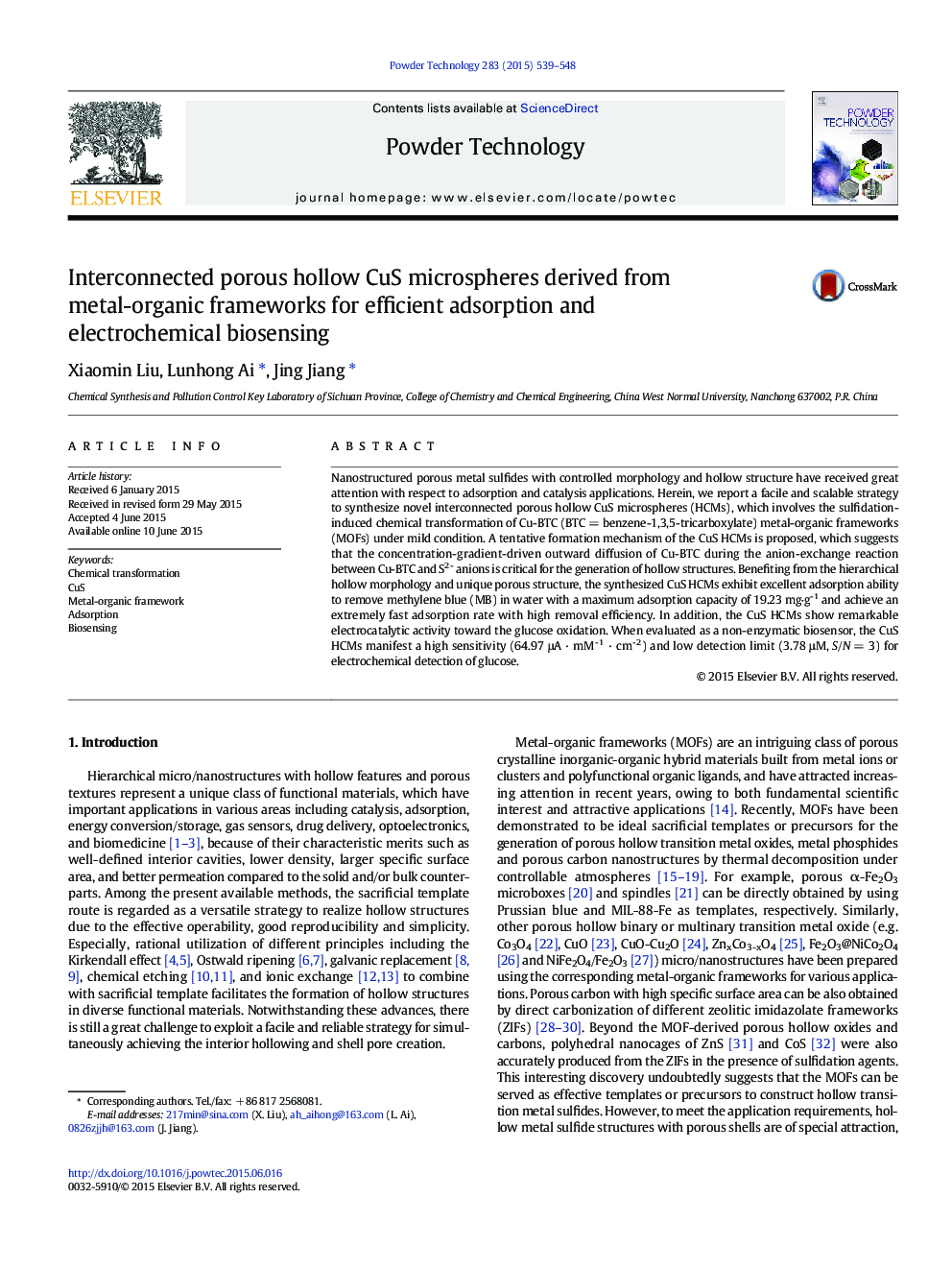| Article ID | Journal | Published Year | Pages | File Type |
|---|---|---|---|---|
| 235443 | Powder Technology | 2015 | 10 Pages |
•Interconnected porous CuS HCMs was synthesized from Cu-BTC.•Formation mechanism of the porous CuS HCMs was proposed.•The porous CuS HCMs showed good performance for nonenzymatic glucose detection.•The porous CuS HCMs exhibited good performance for adsorptive removal of methylene blue.
Nanostructured porous metal sulfides with controlled morphology and hollow structure have received great attention with respect to adsorption and catalysis applications. Herein, we report a facile and scalable strategy to synthesize novel interconnected porous hollow CuS microspheres (HCMs), which involves the sulfidation-induced chemical transformation of Cu-BTC (BTC = benzene-1,3,5-tricarboxylate) metal-organic frameworks (MOFs) under mild condition. A tentative formation mechanism of the CuS HCMs is proposed, which suggests that the concentration-gradient-driven outward diffusion of Cu-BTC during the anion-exchange reaction between Cu-BTC and S2 - anions is critical for the generation of hollow structures. Benefiting from the hierarchical hollow morphology and unique porous structure, the synthesized CuS HCMs exhibit excellent adsorption ability to remove methylene blue (MB) in water with a maximum adsorption capacity of 19.23 mg∙g- 1 and achieve an extremely fast adsorption rate with high removal efficiency. In addition, the CuS HCMs show remarkable electrocatalytic activity toward the glucose oxidation. When evaluated as a non-enzymatic biosensor, the CuS HCMs manifest a high sensitivity (64.97 μA · mM- 1 · cm- 2) and low detection limit (3.78 μM, S/N = 3) for electrochemical detection of glucose.
Graphical abstractFigure optionsDownload full-size imageDownload as PowerPoint slide
